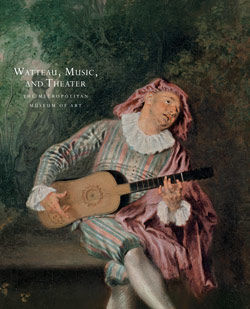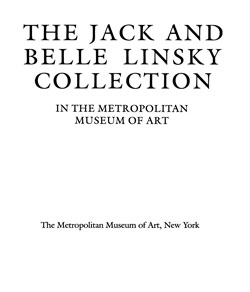Harlequin with Goat as Bagpipes
Manufactory Meissen Manufactory German
Harlequin-bagpipers belong to Meissen's most popular commedia dell'arte designs. In this early version, the figure sits on a rocky mound, his head turned to the right and his right leg extended away from the pedestal. Subsequent models were more compact, with both legs resting on the base and the bagpipes held closer to the body. The diversity of costumes and poses attests to the design's commercial success, which necessitated frequent reneals of worn-out molds. Each time, the model would be slightly altered, for example by exchanging a peaked hat for a tricorne. The costume patterns, color scheme, and facial details were left entirely to the decorator's imagination. The Metropolitan Museum's Harlequin sports a pointed blue hat, a gold-trimmed yellow jacket with a white ruff collar, purple-and-red-striped britches over green stockings, and purple shoes with golden buckles. This colorful outfit and mischievously smiling mask conform to the picturesque aesthetics of eighteenth-century theatrical figures.
Harlequin's bagpipes are made of a goat's hide complete with hooves, head, and horns. The instrument is clearly inspired by the Bohemian bock, featuring a single cylindrical chanter, small bellows, and a right-angle, extensible drone with two tubes connected by a sliding joint. While intact goatskins frequently served as bags, the head was replaced with a zoomorphically carved wooden stock. In the Meissen model, the exaggerated naturalism of the instrument amplifies the composition's grotesque character; it is difficult to resist the impression that Harlequin makes a live goat blow the chanter by squeezing its voluminous body with his left arm.
Despite their lowly associations, small bagpipes known as musettes became popular in aristocratic circles in the seventeenth and eighteenth centuries. Bock ensembles were attached to the Saxon court, accompanying weddings, hunts, and festival processions, while nobles often disguised themselves as Tyrolean bagpipers at court masquerades. Meissen figures were another expression of that broad cultural vogue.
Due to rights restrictions, this image cannot be enlarged, viewed at full screen, or downloaded.




